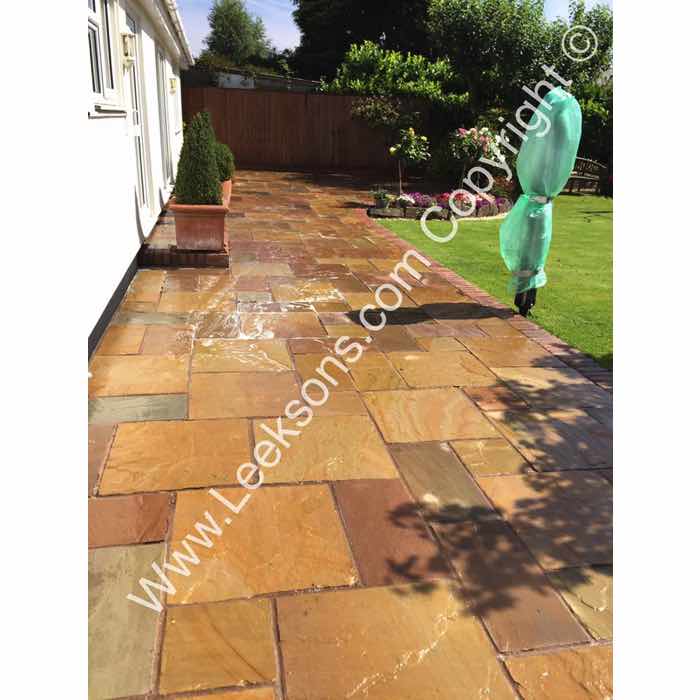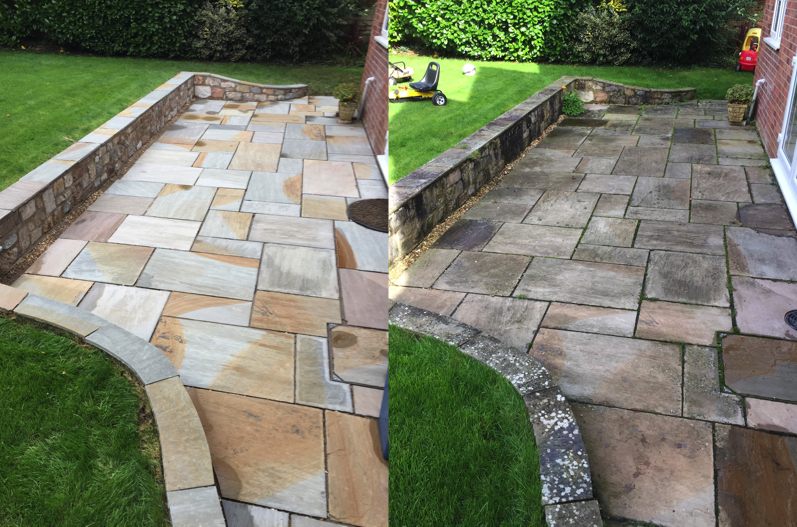How to clean Indian sandstone
Indian sandstone is a favourite for many homeowners. The different colours in the Indian sandstone will look great in your property and brighten the garden. The natural stone gives a quality finish and adds a touch of class to your garden. This article will talk about how to clean Indian Sandstone.
Due to the wet weather we experience in the UK algae and light-chain will start to grow on your Indian sandstone. If you are having Indian stone problems and are experiencing black spots on Indian sandstone do not worry. With the right chemicals and techniques your Indian sandstone can return to its former glory.

Cleaning Indian Sandstone
There are a few Indian sandstone cleaning products available. However, it is important that acid is not used. Some cleaning chemicals can be used on other services, such as bricks. Many of these products will contain hydrochloric acid. This will mark the sandstone and may cause permanent damage. So it is important that when you choose the sandstone cleaner that the right chemicals are used.
Some home owners will YouTube how to clean Indian sandstone and do a Google search on how to remove stains from sandstone patio. Some of our customers have used patio magic on Indian sandstone or a similar off-the-shelf chemical. This will work and kill the algae and lighting on the surface. However, the results take a long time to come and are limited.

Can you jet wash Indian sandstone?
Yes you can. A jet washer or pressure washer is an ideal way of cleaning Indian sandstone. But care must be taken. It is important to use either a flat surface cleaner or a wide fan tip. Add some sandstone can be soft it is important not to use a pencil jet or use a turbo on a high pressure setting.
By employing a professional cleaning company to carry out the Indian sandstone cleaning A larger pressure washer would likely be used. This means more flow can be achieved, meaning less pressure is needed.
Can you steam clean Indian sandstone?
Yes you can. Steam cleaning Indian sandstone can eliminate the need for using chemicals. The cleaning will take a little longer, but this can be the best solution in some cases. For example, if your Indian sandstone is next to a pond using chemicals would not be an option. Instead, by using a steam cleaner the algae and lichen can be removed from the surface.
Steam cleaning will mean that less pressure needs to be used for the clean. Superheated steam cleaning is the best way to clean Indian sandstone. By cleaning at a low pressure and a very high temperature, up to 150°C, excellent results can be achieved.
How do I stop my Indian sandstone from becoming dirty again?
And Indian sandstone sealer can be applied to your Indian sandstone once it has been cleaned. It is important that a quality sealant is used. We like to use Resiblock as our chosen Indian sandstone sealant. If a homeowner decides to seal their Indian sandstone themselves, it is important to do several things.
- Ensure the surface is cleaned thoroughly and all lichen, Moss, algae, and other stains are removed completely.
- Kill the lichen and moss on the surface with a biocide.
- Ensure all pointing is intact
- Insure the Indian sandstone is completely dry before applying a sealer. If the sealant is applied to a damp surface The sealant will fail. Also, as the water tries to escape by evaporation, it will be trapped in by the sealant. This leaves marks on the top of the Indian sandstone which can be very expensive to remove
